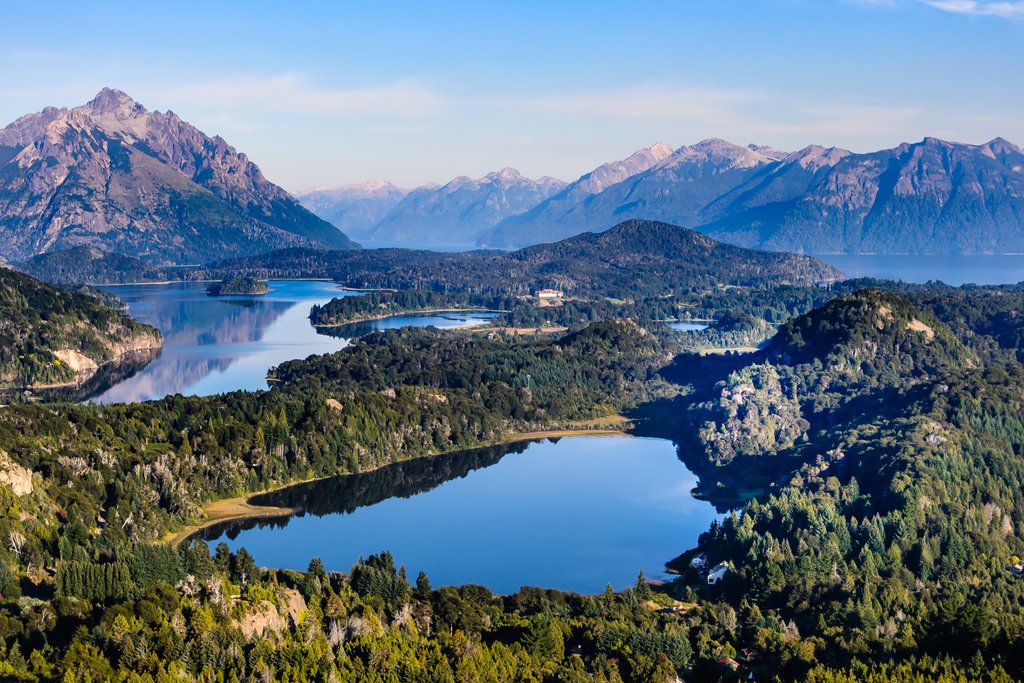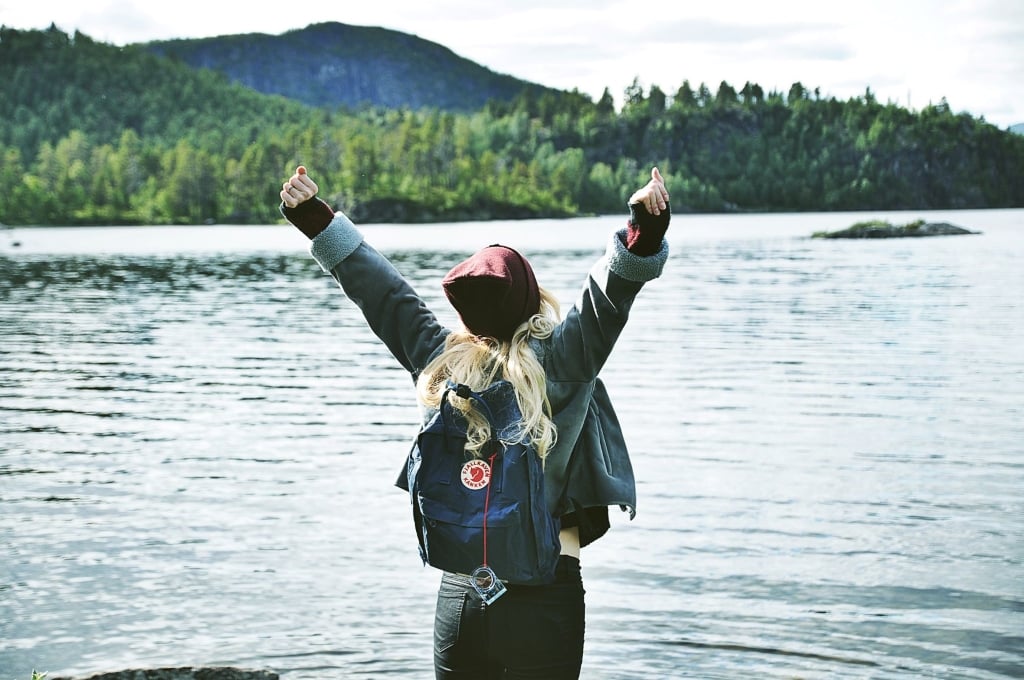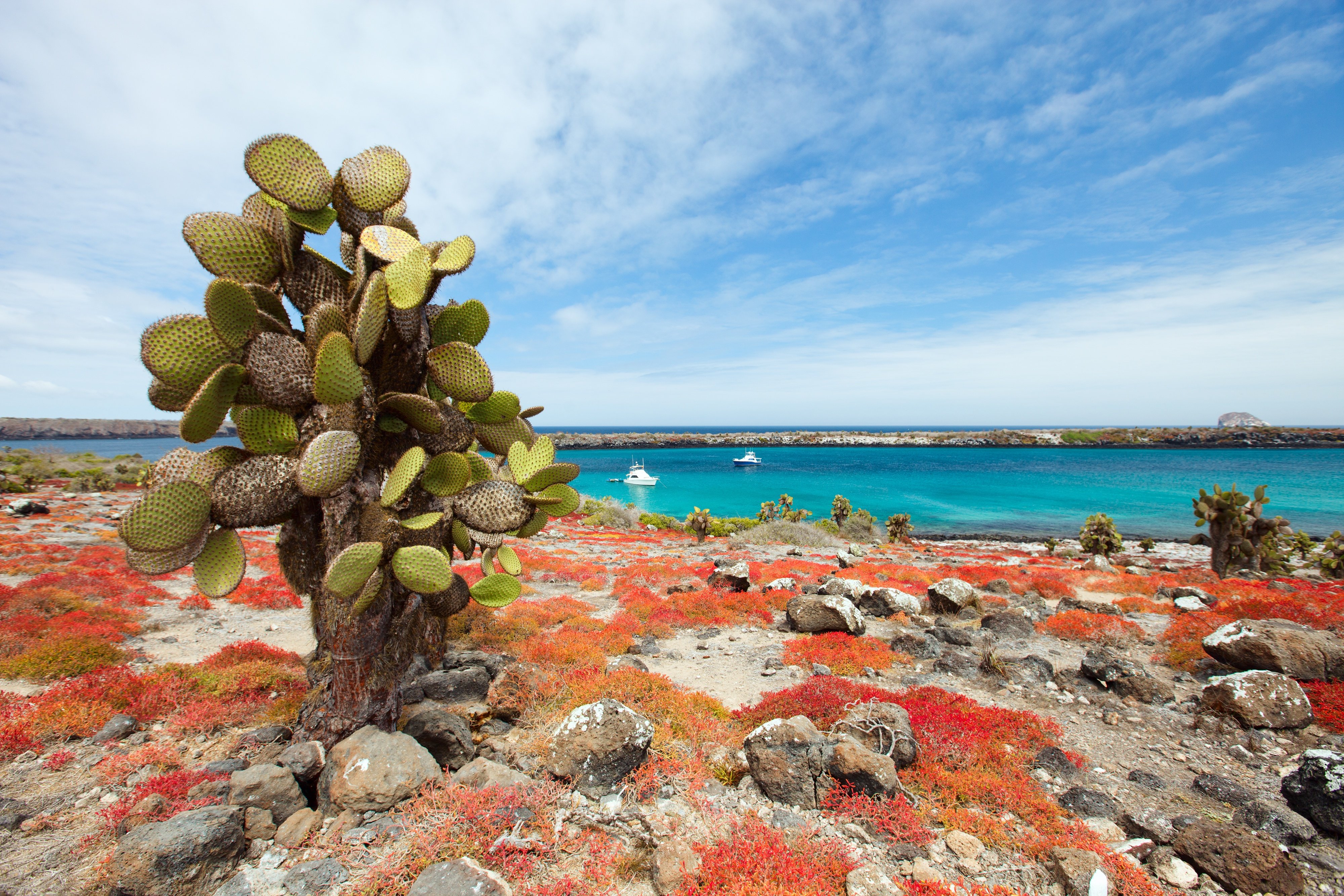The overland journey from Uyuni in Bolivia to San Pedro de Atacama is one of the world’s epic adventure trips. Ecuador may have its “Avenue of the Volcanoes” but Bolivia has something similar, but far different…if you’re up for it. This is the perfect way to combine a trip to the Uyuni Salt Flats with the Atacama Desert.
Most programs take three to four days. There are several primary routes between Uyuni in Bolivia and San Pedro de Atacama in Chile. Regardless of your path you will be traveling by Toyota Land Cruiser across salt lakes and deserts, along gravel and dirt roads, sandy double-track paths, past ranges of dormant and extinct volcanoes. Nights will be spent at salt hotels and rustic lodges.
Two of the main features along the way are the Uyuni Salt Lake and the Eduardo Avaroa Andean Fauna Reserve.
UYUNI´S SALT LAKE
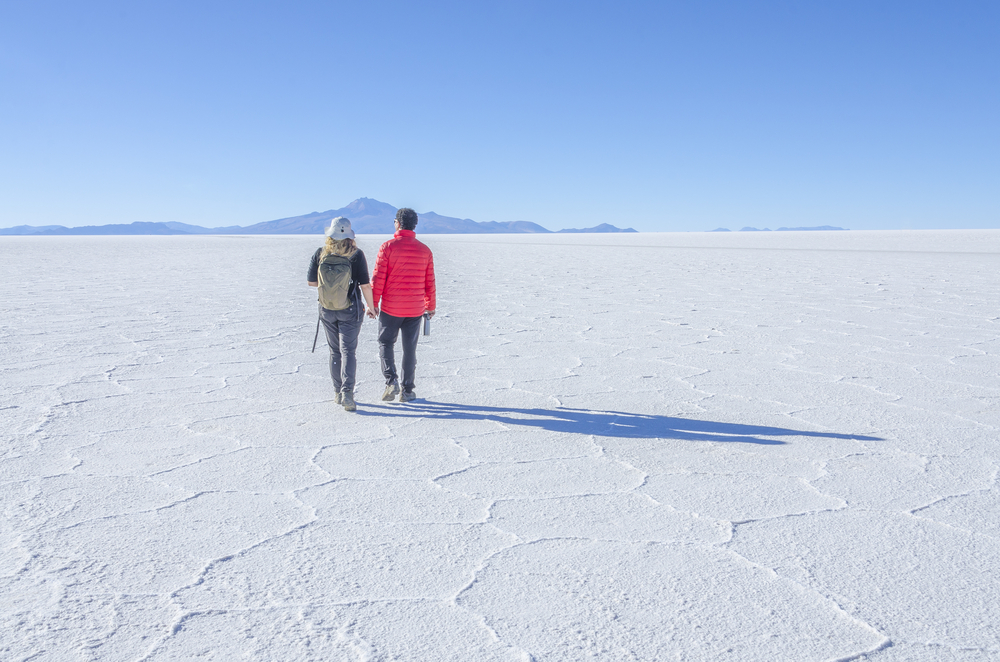
At almost 12,000 feet above sea level and surrounded by the Bolivian Altiplano (High Plateau), this endless shallow, glimmering salt lake covers more than 4,000 sq mi and is the largest in the world and one of the most important salt reserves worldwide. This salt lake is a paradise for photographers with magnificent sunrises, sunsets and surreal landscapes. Its history chronicles of human occupation show: prehistoric cultures, the Incas, Spanish, and the indigenous communities living there now, who breed alpacas, llamas and fine vicunas.
This and many other salt flats nearby originated around 10,000 years ago and are the last geological stage of a huge lake that once covered 20,000 Km2. The Uyuni´s Salt Lake is part of an ancient drainage of the Titicaca and Poopó lakes in southwest Bolivia. The surreal scenery and unforgettable wildlife form make this place one of the natural wonders of Bolivia.
EDUARDO AVAROA ANDEAN FAUNA RESERVE
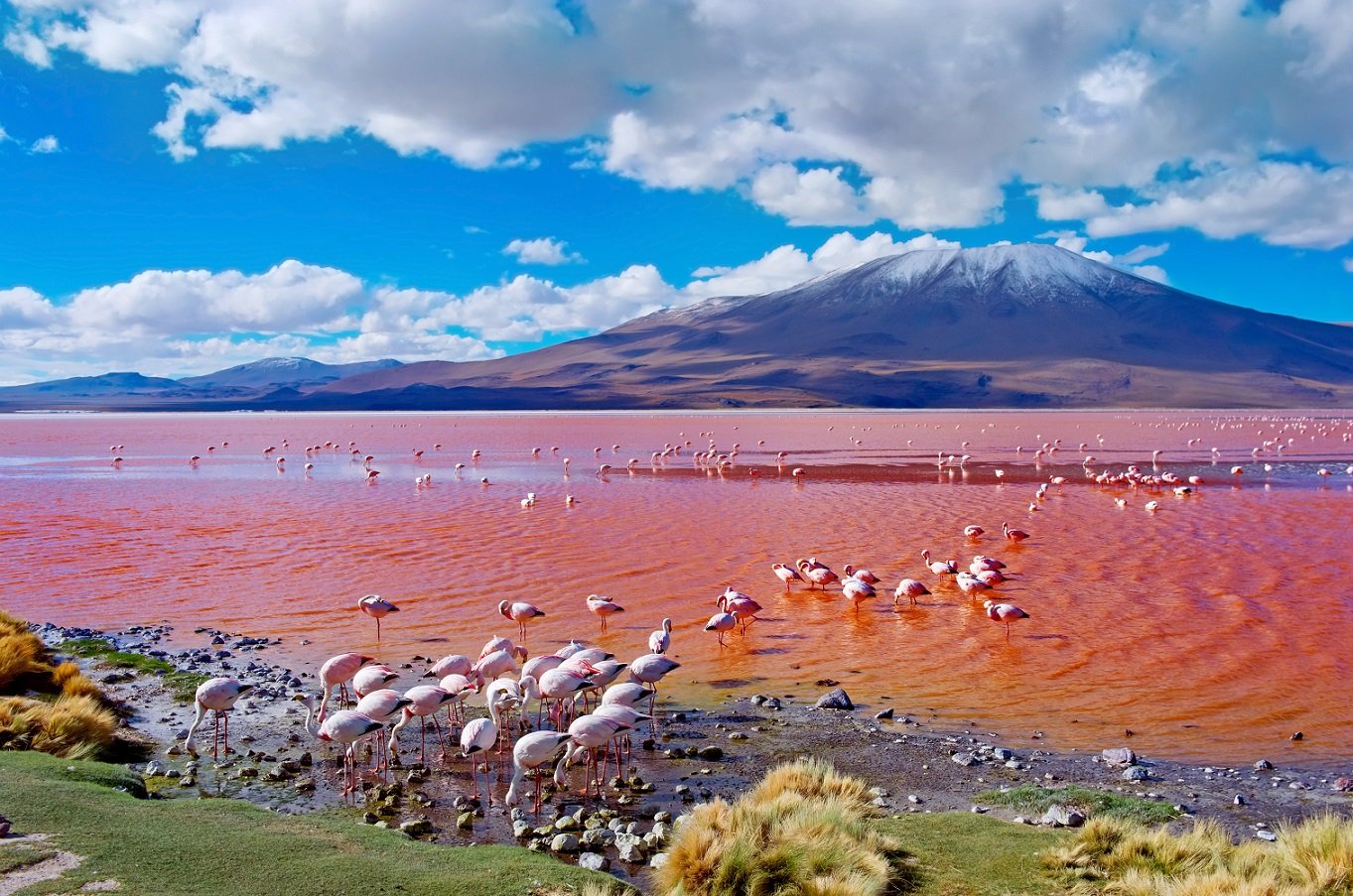
The Eduardo Avaroa Andean Fauna Reserve is located in the southwest corner of Bolivia and a major highlight of the Uyuni to Atacama journey. The preserve was created in 1973 to protect the wildlife that lives in the remote Altiplano regions characterized by high peaks, volcanoes, saline lagoons and dry deserts that are a favorable habitat for the Andean Rhea, Vicuna, three species of flamingos, puma, and the Andean Fox, as well as unique flora.
Among the main attractions of the reserve you will find Laguna Colorada and Laguna Verde, as well as other geological features that make this region one of the most beautiful and photographic remote areas in South America.
The 3-day program described here is along the Western Route that starts in Uyuni, travels south near the frontier with Chile, through the Eduardo Avaroa Reserve, ending in San Pedro de Atacama in Chile. The trip can be arranged in reverse. Elevations are approximations.
*An alternate (Eastern) route tracks south from Uyuni along Route 701 passing the villages of San Cristobal and Culpina K to the high and rich valley of Alota. From Alota the route heads south to the town of Villamar, where you will spend the night at the Hotel Jardines de Mallku Cueva. From Villamar the route continues to Laguna Colorada and Hito Cajon on the Chilean border.
Day 1
After loading the Land Cruiser with supplies and passengers’ gear you will set off for a visit to the train cemetery located on the outskirts of Uyuni. From there you will drive north to Colchani to see how locals extract and process salt. On the flats you will observe the "ojos de sal", where ice cold healing water bubbles through the salt. This water is from the Tunupa Volcano via an underground river. The tour crosses the salt lake to Isla Incahuasi for a hike around this rocky volcanic area that hosts thousands of huge cacti and offers an impressive and unique 360-degree view of the salt lake. In the afternoon you will head north towards the dormant Tunupa Volcano, arriving to Tahua. With an additional day you can hike the slopes of Tunupa.
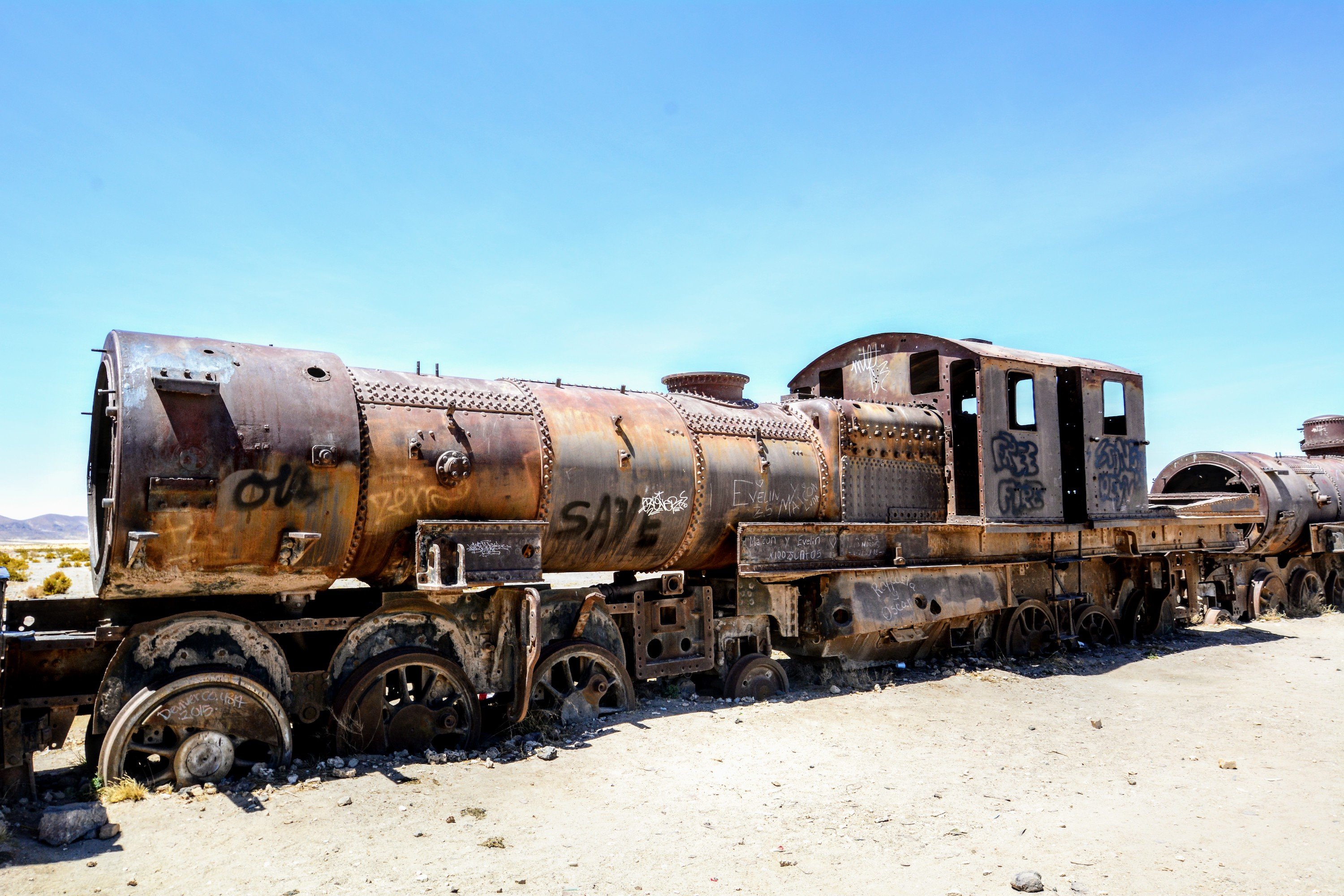
The first night will be spent at one of the salt hotels, located near Colchani.
Day 2
Set off early in the morning for a drive southwest across the open salt flats. South of Route 5 you will enter and cross the Chinguana Salt Flats. The road along the salt lake crosses the Uyuni to Antofagasta railway where you will stop for photos.
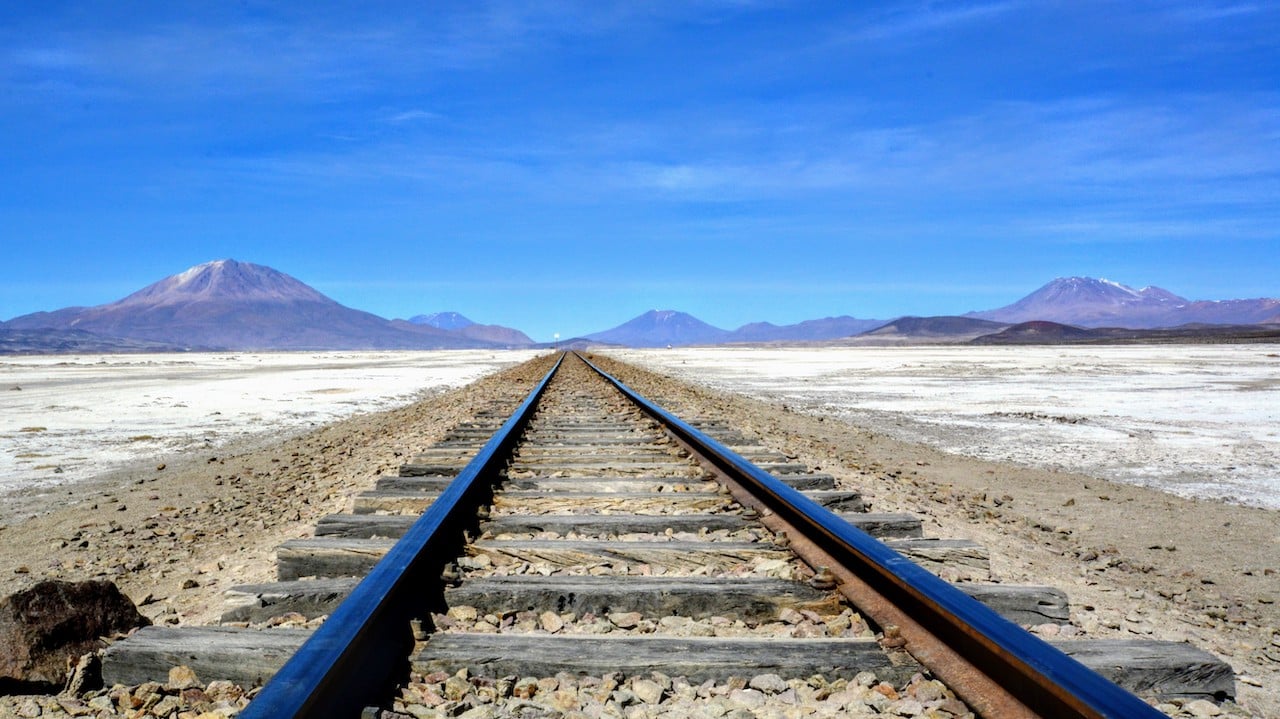
Continue south to Route 701, the primary road from Uyuni to Chile. You will drive along 701, stopping for photogenic views of the mildly active Ollague Volcano that straddles the border with Chile.
The route turns south off 701 and begins a sometimes rough but exhilarating off-road journey along sandy dirt tracks, up and down quebradas, over rocky ridges and past boulder fields. The vast landscape south of 701 is braided with dirt tracks, surrounded on all sides by dormant and extinct volcanoes.
Stops will be made at a series of high-altitude lagoons - Cañapa, Hedionda, Charcota, Honda, Ramaditas – where you will likely spot three of the world’s flamingo species: the James, Andean and Chilean.
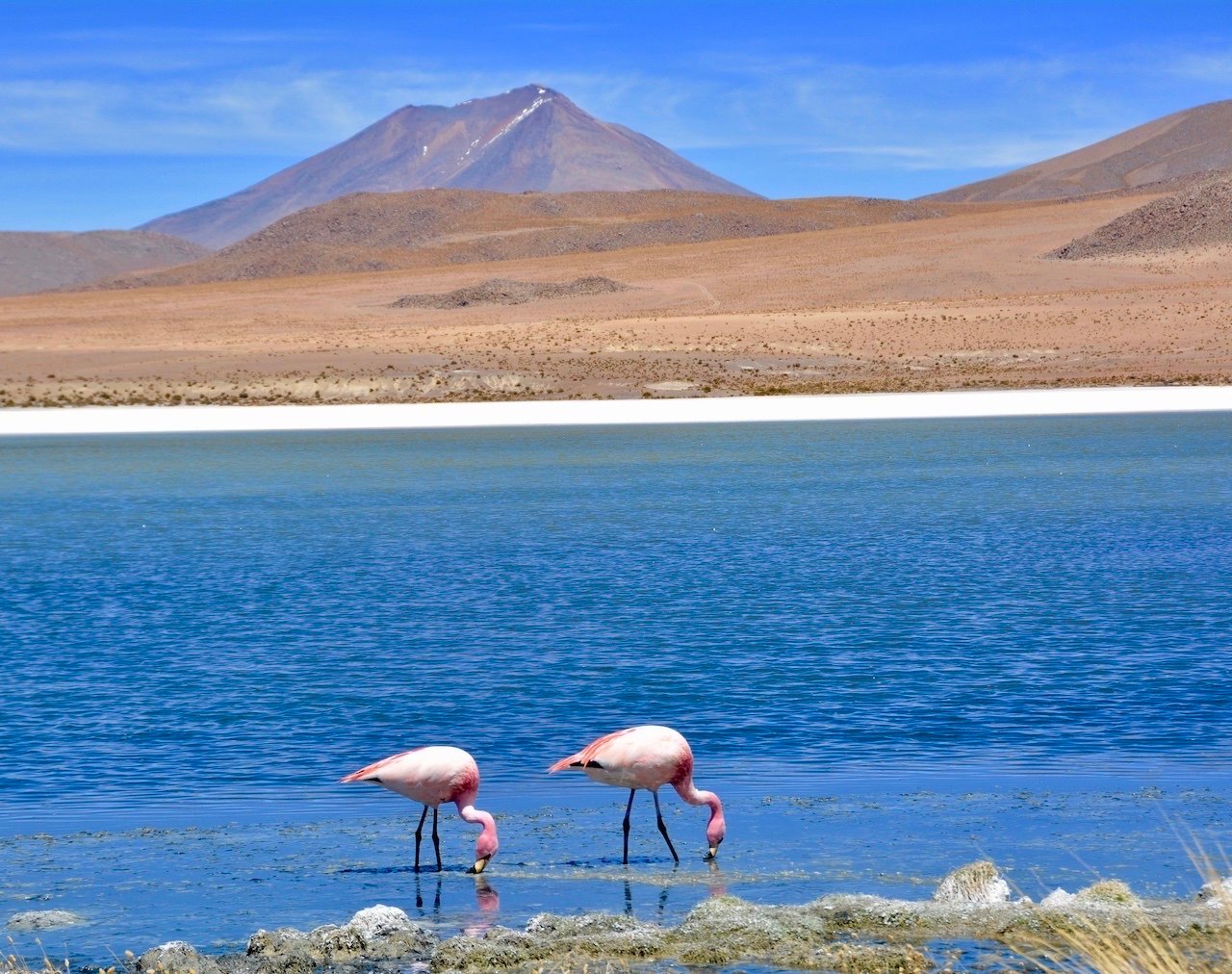
Laguna Cañapa (13,560 feet) is the first lagoon with the first glimpses of flamingos, hundreds of them. You will have the chance to stop here for up-close encounters and photos.
A stop will be made at Los Flamencos Eco Hotel, located next to Laguna Hedionda (13,520 feet). This is often used as a lunch stop. Some overland programs will spend the night at this rustic, but comfortable lakeside lodge.
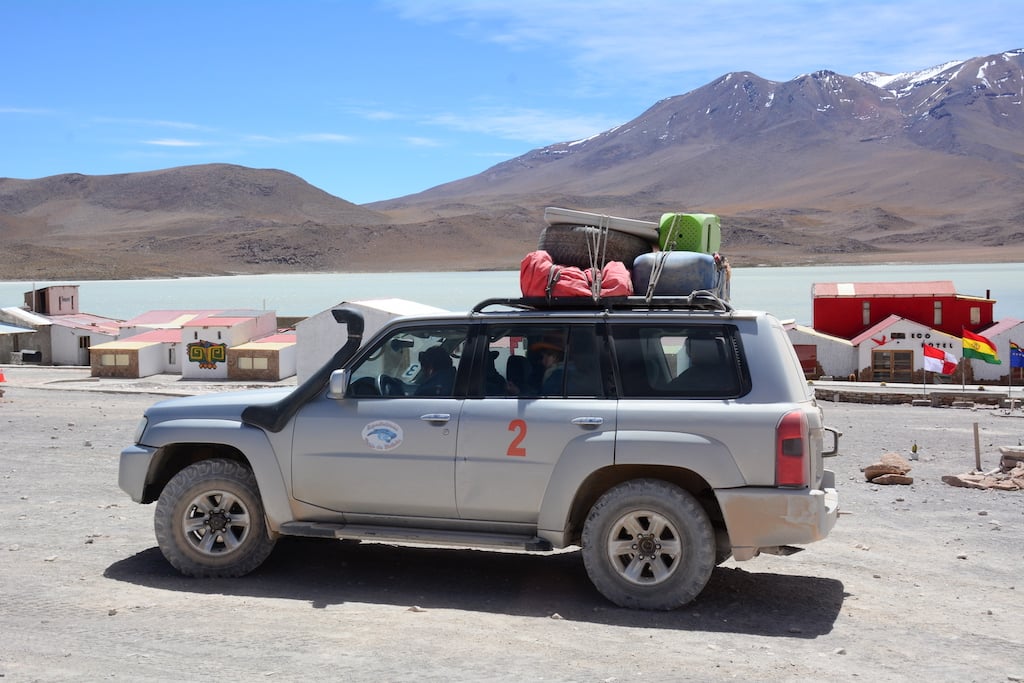
The gravel track continues past Laguna Charcota (13,500 feet), Laguna Honda (13,500 feet), Laguna Ramaditas (14,400 feet), stopping at each for photos or short walks.
After passing Ramaditas you will enter the long Siloli Desert at over 14,800 feet above sea level.
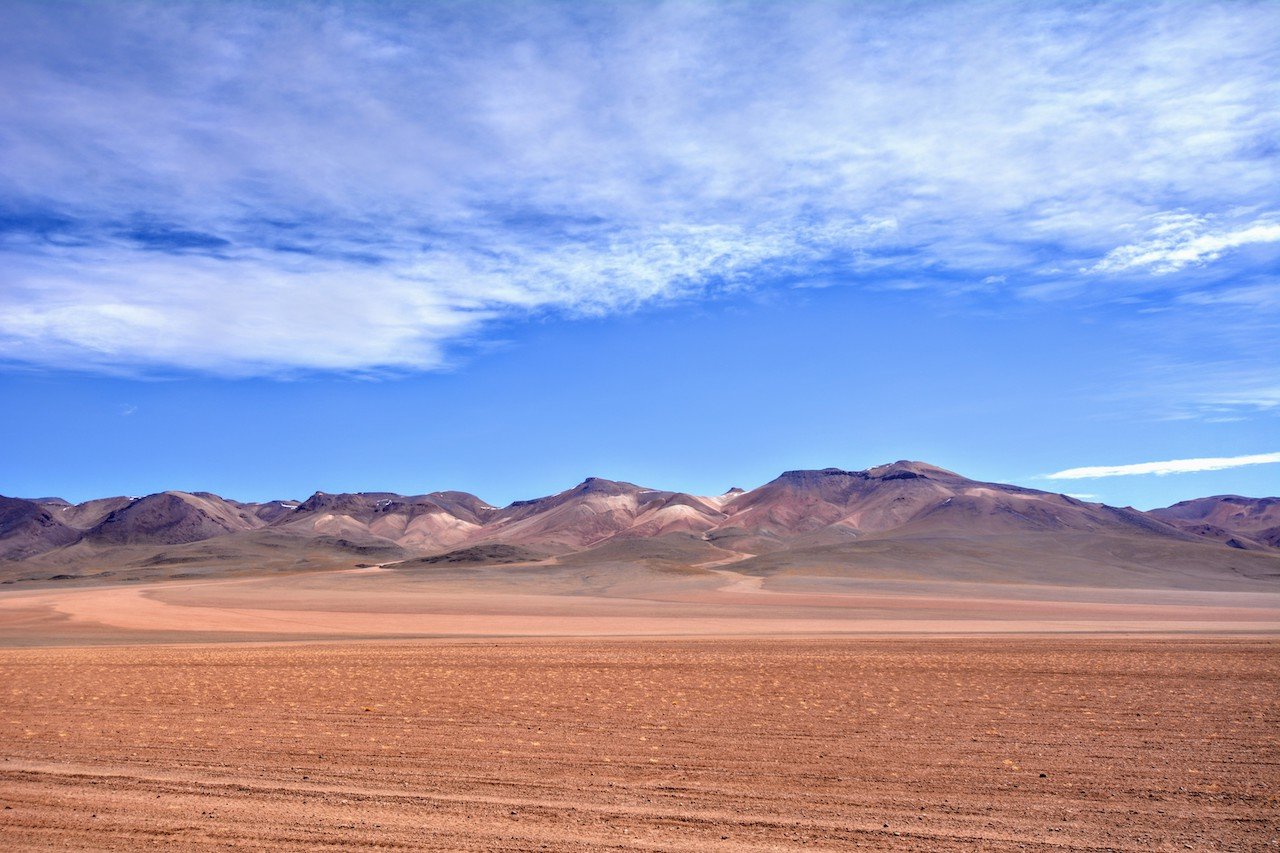
The Hotel Tayka del Desierto is a welcome overnight stay at an ideal location. The hotel is situated midway along the Siloli Desert with long and sweeping views down the length of the desert, a range of volcanoes poised to the west. At this point you are just over a mile from the Chile border.
Day 3
A long day. Depart the hotel and cross the Siloli Desert, stopping at the Arbol de Piedra (the Stone Tree) at the south end of the desert. Continue south to the Eduardo Avaroa Andean Fauna Reserve and the lookout points across Laguna Colorada.
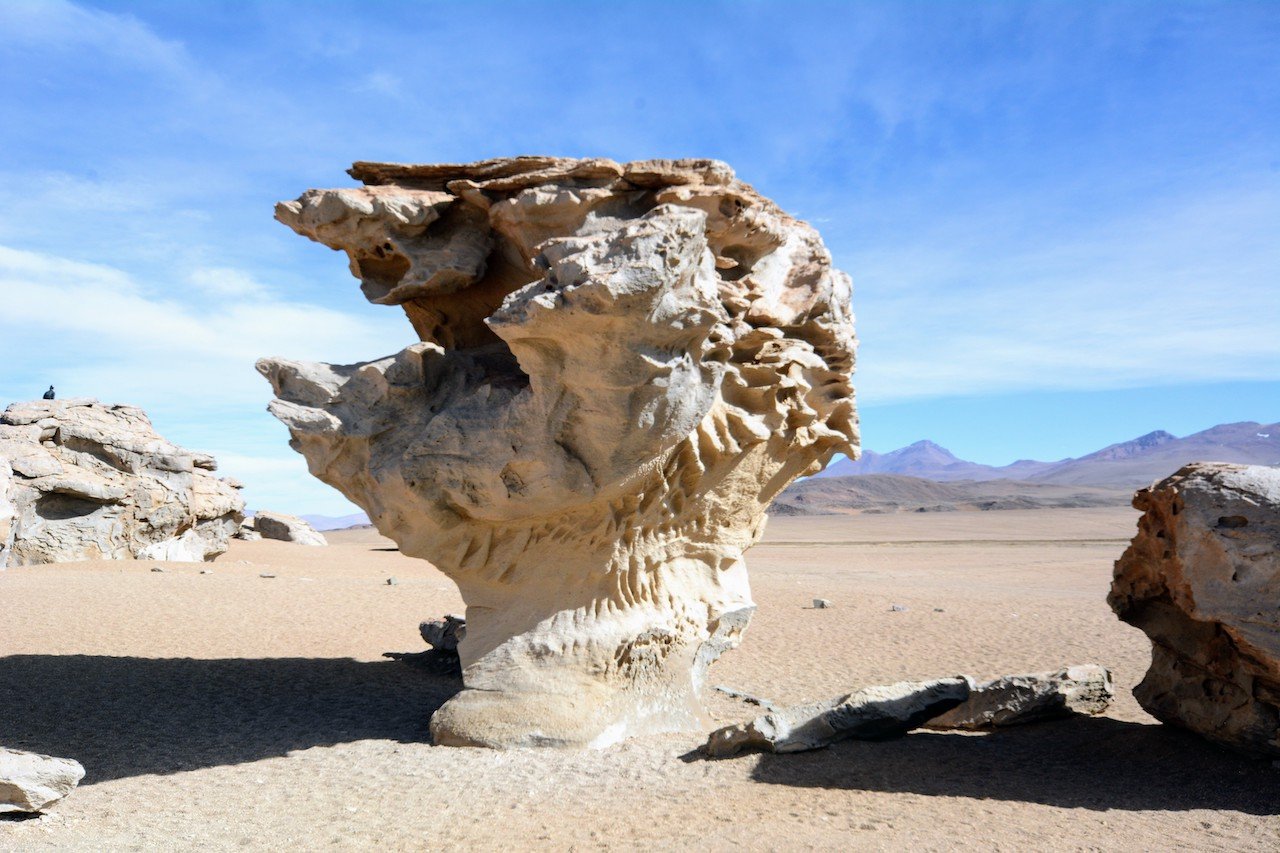
Laguna Colorada, at 14,070 feet with a surface area of around 23 square miles, is home to over 30,000 flamingos, mostly James’ Flamingos. On our morning there, the shallow orange-red lake was dotted with tens of thousands of the birds, feeding on the plentiful plankton.
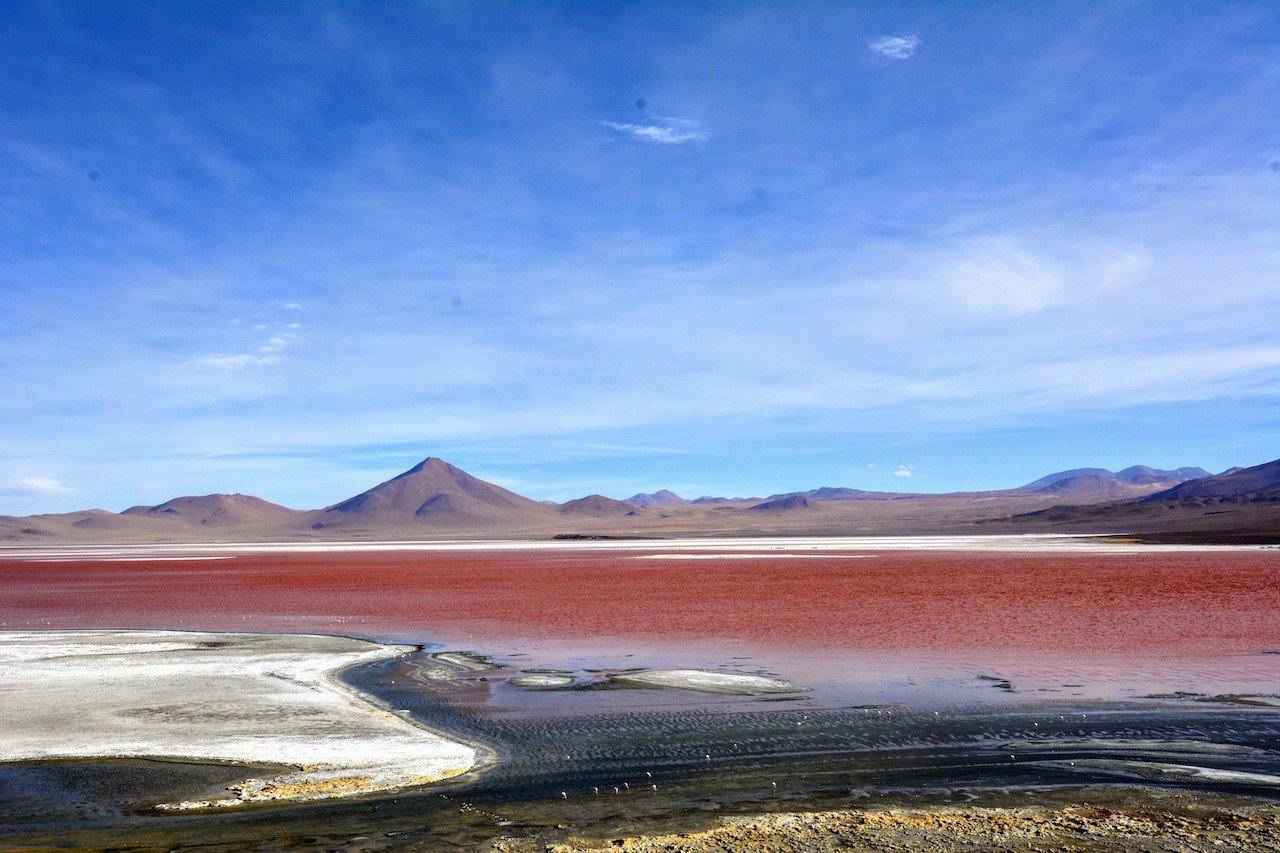
The next stop is the Sol de Manaña Geysers. At over 16,000 feet, Sol de Manaña is a geothermal hotspot with several geysers and mud pots. The temperature was below freezing during our stop. At this place you are less than 20 miles as the crow flies from the El Tatio Geyser, located on the other side of the range in Chile.
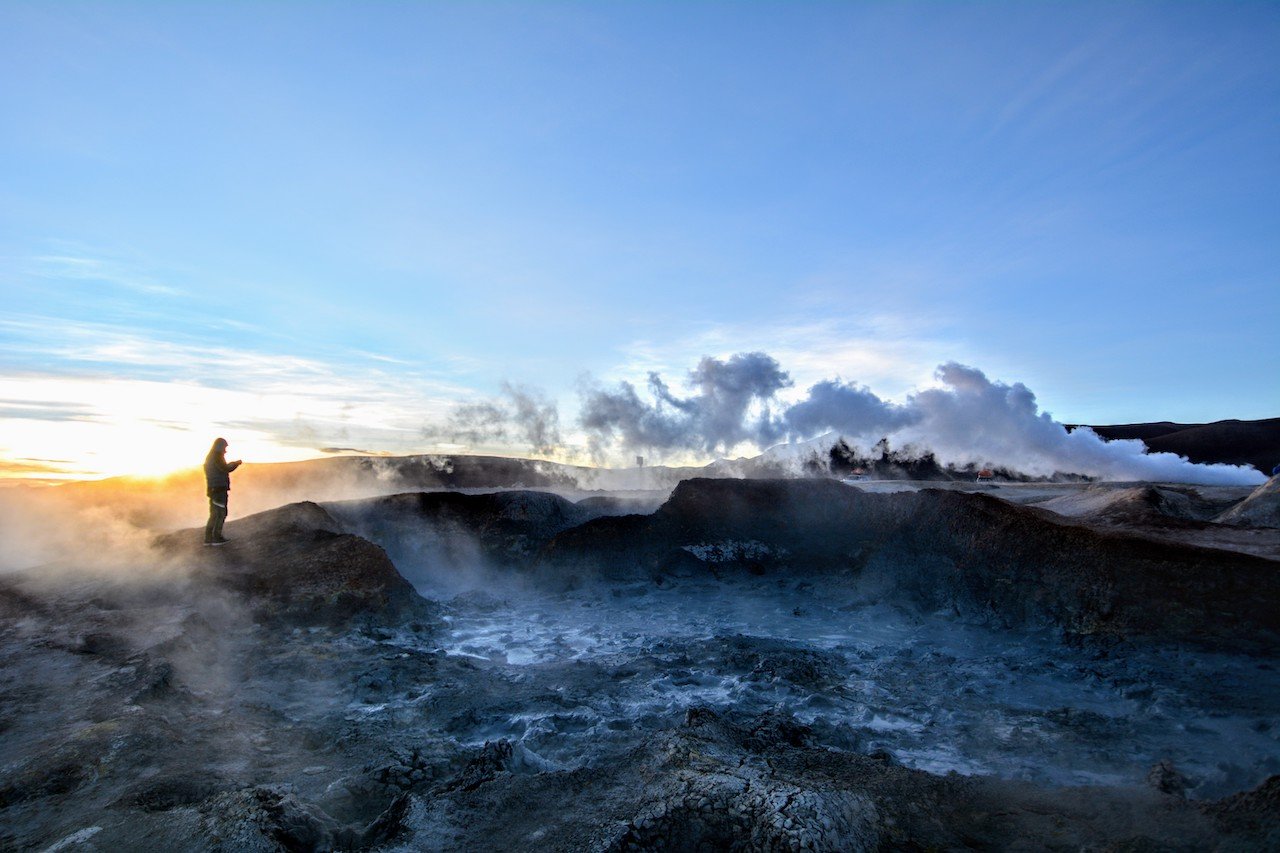
Continue along the Laguna Colorada-to-Hito Cajon road through an eerie moonscape and descend to Chalviri Lagoon and its natural hot springs of Polques (14,400 feet). A stop will be made at Polques for coffee, snacks and a hot soak.
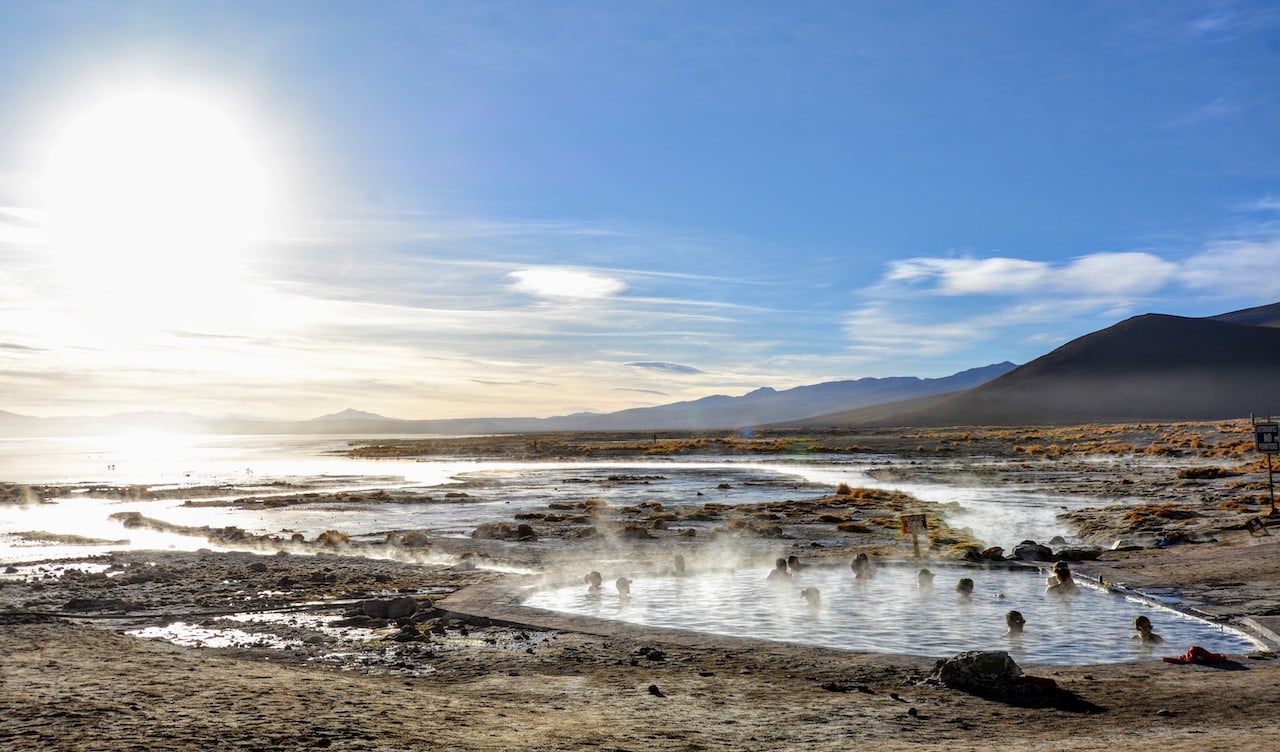
From there you will continue through the Salvador Dali Desert. This surreal and colorful landscape is dotted with enormous boulders reminiscent of a Dali painting. You will stop at the mid-way viewpoint for photos.
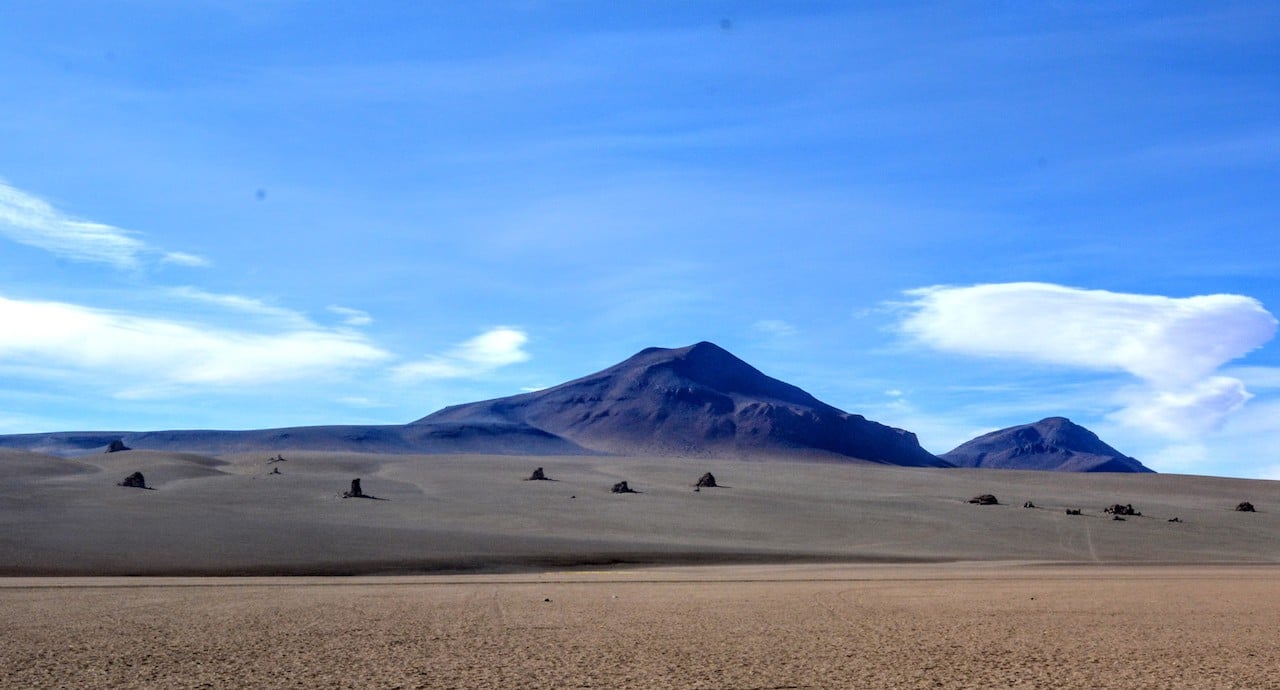
Continue to Laguna Verde (14,336 feet), a beautiful green lagoon at the foothills of the Licancabur Mountain. A last stop will be made at one of the overlooks above the lake.
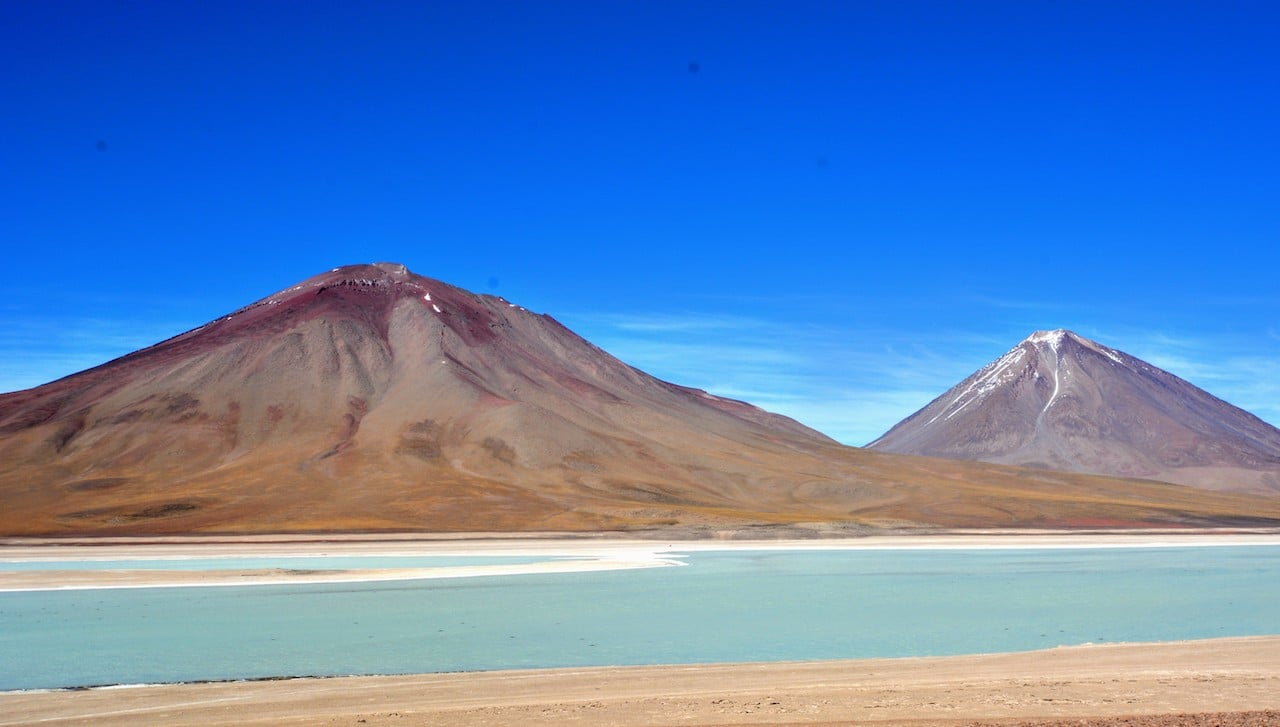
From there it is a short drive, less than 10 miles, to the border with Chile at Hito Cajon.
At Hito Cajon you will pass through border formalities and board the vehicle for the rapid and spectacular descent to San Pedro de Atacama. All-inclusive lodges include the transfer. Your driver will meet you at the border. Otherwise you will take one of the regular shuttle buses to town.
HOTELS
The Palacio de Sal Hotel is located on the banks of the majestic Salar de Uyuni, 25 km from the city of Uyuni. The hotel has been built entirely with salt: walls, floors, ceilings, furniture, sculptures...everything! A hotel in balance with nature and the landscape around it that will help you to enjoy a pleasant and unforgettable rest with all the comforts of modern hotel industry. Meals are served at the hotel’s El Mesón restaurant.
The Hotel de Sal Luna Salada is also located near Colchani beside the Uyuni Salt Flats and also constructed entirely of salt. Hotel facilities include restaurant and spa.
Kachi Lodge - luxury domes located on the Uyuni Salt Flats at the foot of Tunupa Volcano.
Tayka Del Desierto is situated on the Siloli Desert and a spectacular place to spend the night. The hotel offers the opportunity to visit one of the most beautiful places in South America: the Eduardo Avaroa Andean Flora and Fauna Reserve, where you will find the wonderful Colored Lagoons, the Geysers de Sol de Mañana and the Stone Tree, among other attractions that await your visit the following day.
The Mallku Cueva Hotel is located in one of the most attractive and impressive paths of the Lípez gaps. The hotel is nestled beneath a huge rock which rises behind the hotel. All rooms have private bathroom and central heating. This is without doubt the best hotel south of Uyuni. The Mallku Cueva is the usual hotel on the second night when taking the Eastern Route.
Private programs will be accompanied by English-speaking guide and driver and include all meals and accommodations. Budget trips can be booked but will likely be with only a Spanish-speaking driver who is also the guide. Be forewarned, with budget and group departures the quality and dependability of the vehicle (and driver/guide) can be chancy.
You will spend much of the trip at over 13,000 feet. Temperatures can dip well below freezing at night and in the early mornings so pack accordingly. Winds can be fierce at many points along the journey, especially on the open deserts.
After spending 6+ hours a day for three full days in a 4X4 driving along rough roads, a hot shower, delicious meal and a comfortable bed in San Pedro is a perfect end to the adventure.
Interested in taking this amazing journey? Speak with a Lost World Adventure consultant.

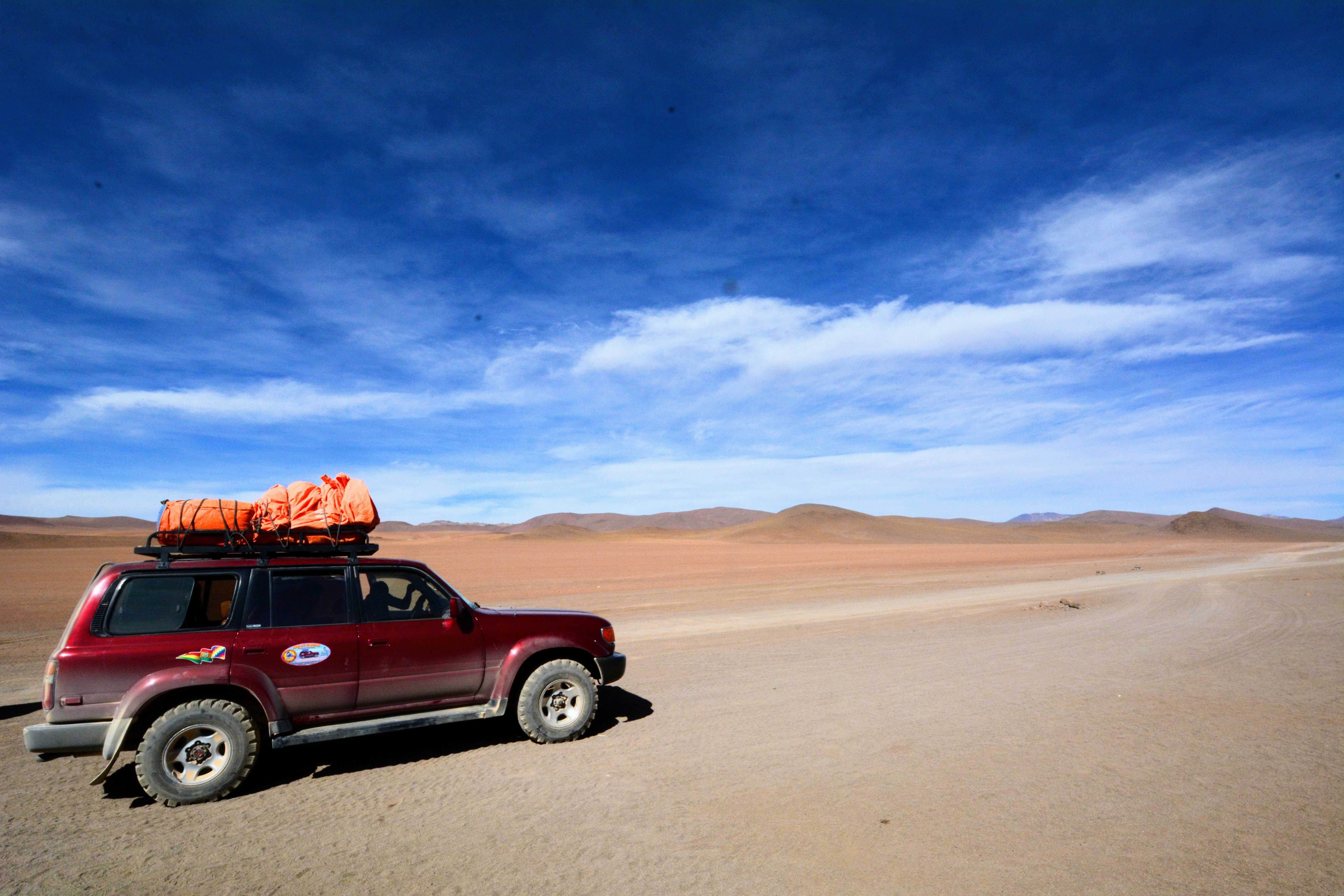


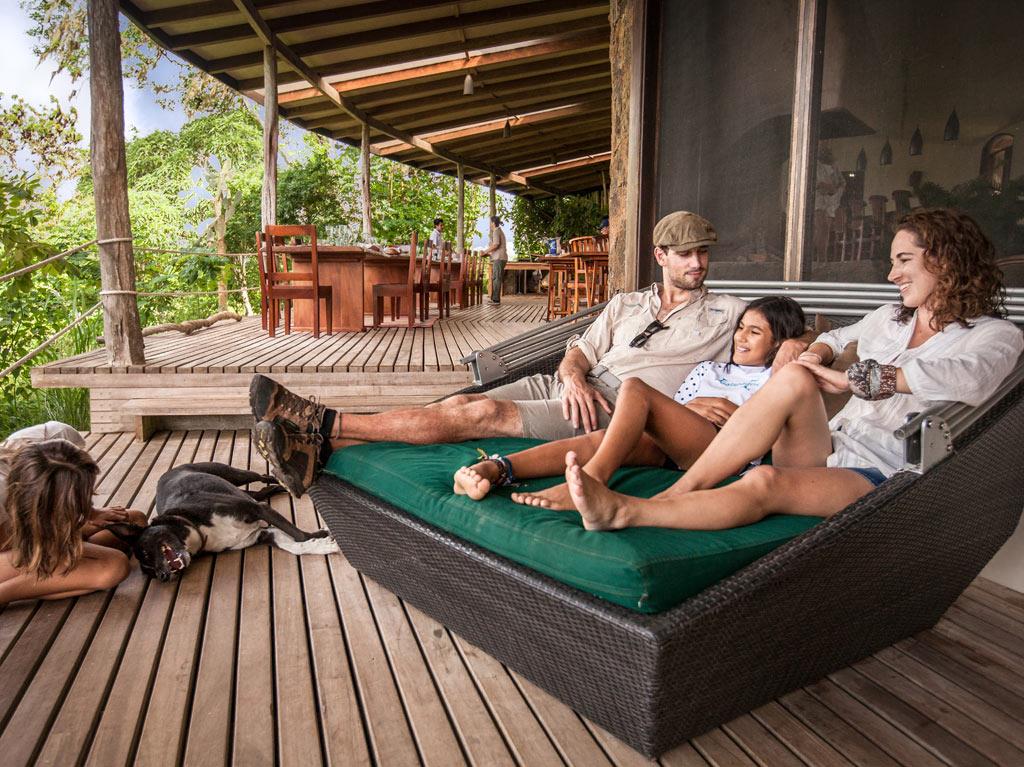
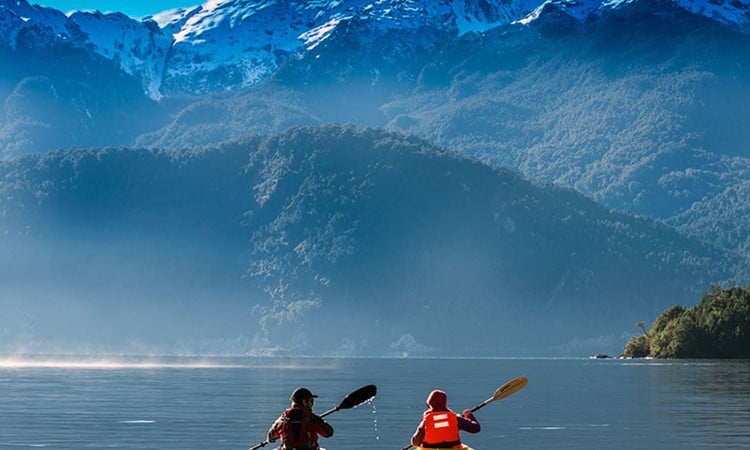
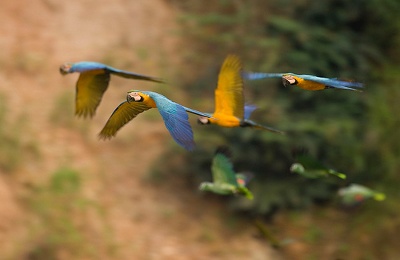

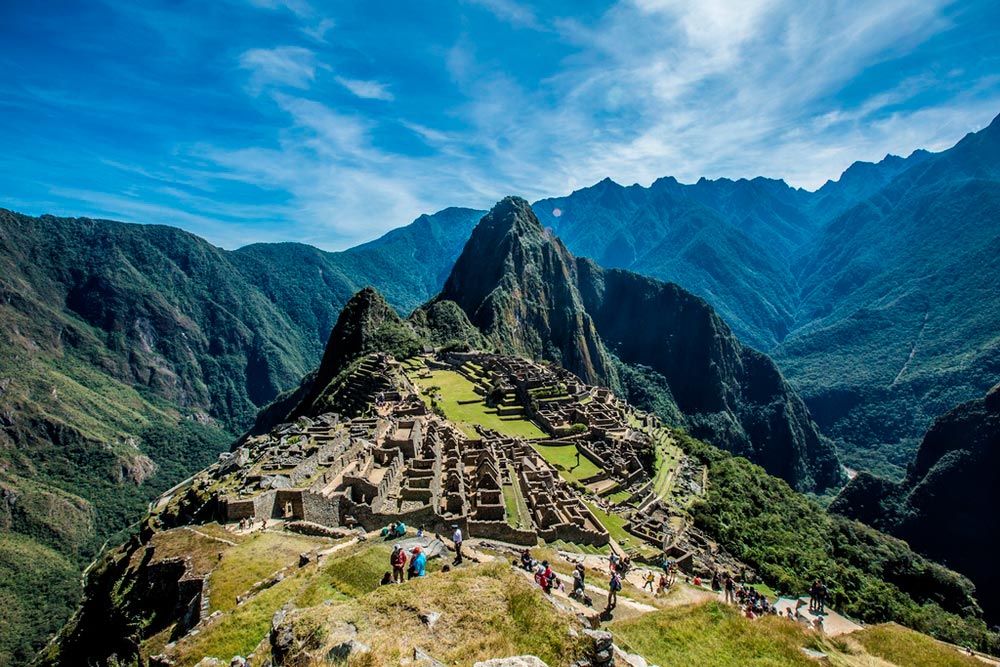
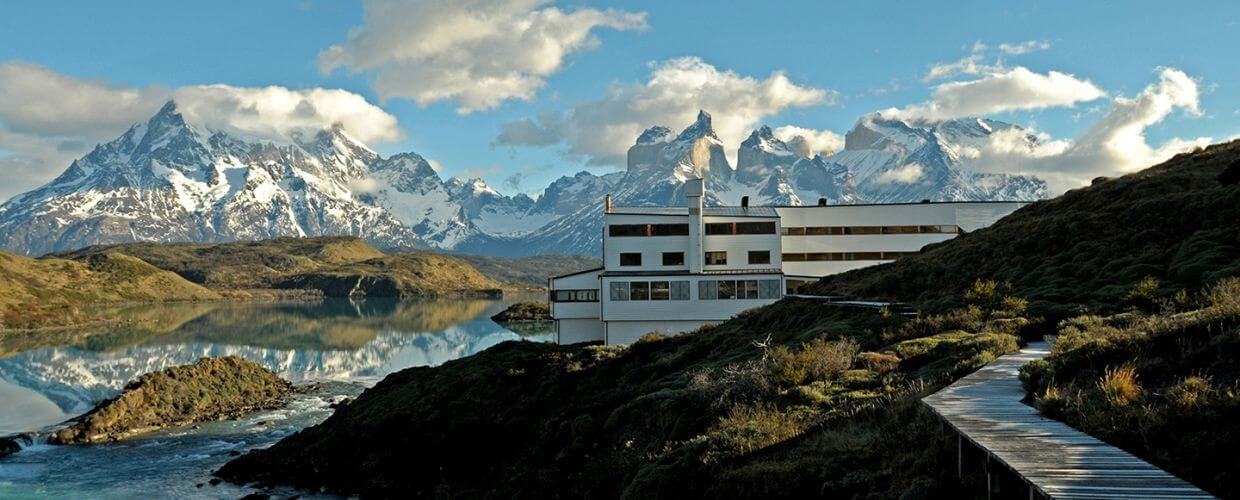
.jpg)
